Deer Park Canyon (SBA Co)
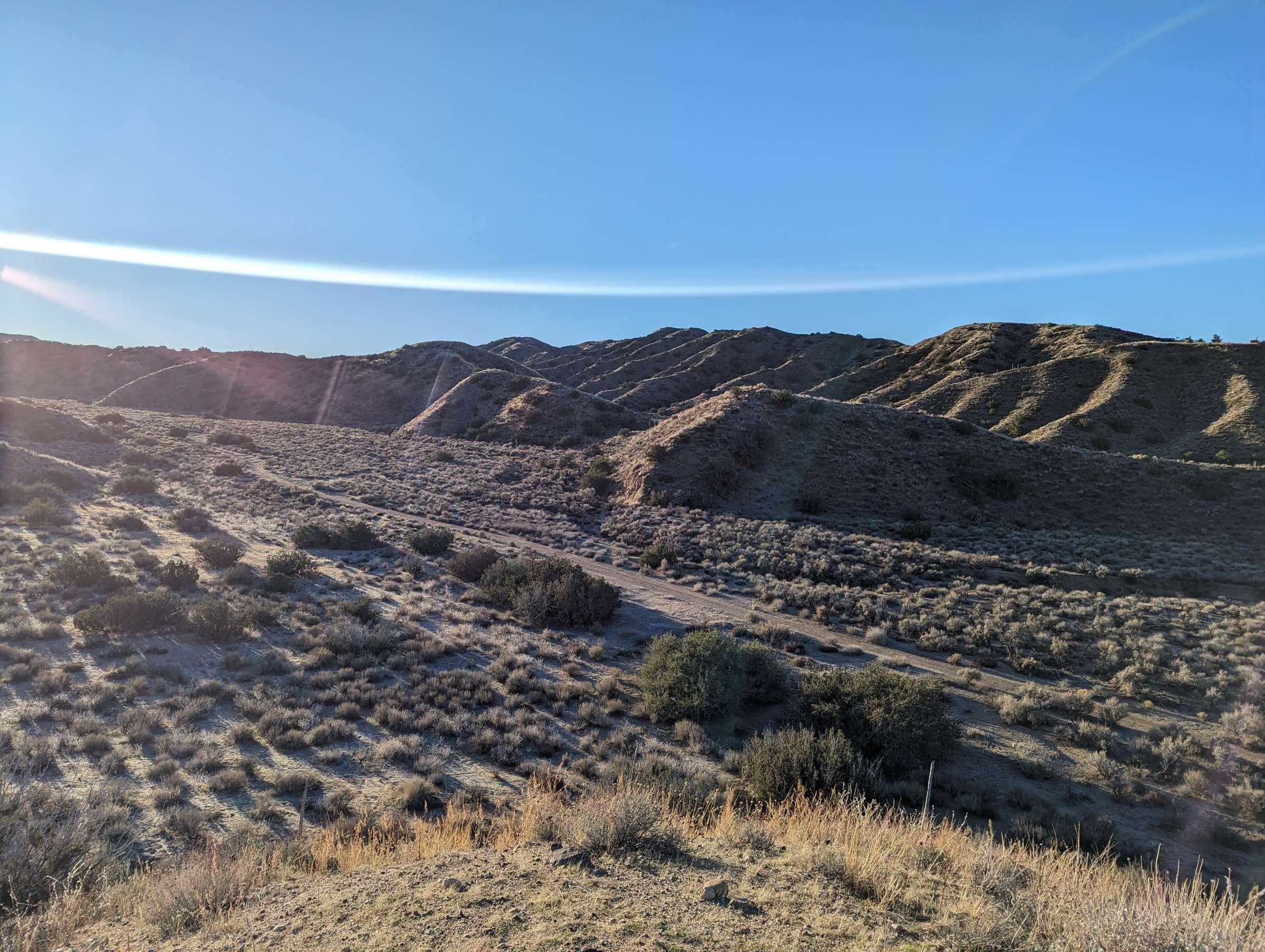
About this Location
Deer Park Canyon is a very special area, with sensitive desert habitat that is not easily found in Santa Barbara County. The area is public and open to birders, but access is tricky. One must drive in through private land along a designated public access easement, opening and closing two gates along the way. One of the property owners along the route has a history of contacting people using the easement and questioning them; see below for advice on handling that situation if it arises. The route does not require four-wheel drive, but is not suitable for low-clearance vehicles.
See the accompanying aerial photos for the exact route to follow. Signage along the route is somewhat misleading so it is important to know and follow the correct route.
1. Take State Highway 33 to the turnoff near (34.862650, -119.489183). The turnoff is signed with a blue "DPC" sign, and another sign advertising the "Cielos" retreat. The public access easement begins here.
2. Follow the dirt road east through the orchard. When you exit the orchard you angle to the left, following the path of a dry watercourse on your right. After several hundred yards you angle back to the right, following the signage for "Cielos" and "DPC".
3. After a short distance you reach the location marked "Point A" on the accompanying photos. This is one of the trickier parts of the route. People going to Cielos would turn left here, while people going to the private hunting operation to the south would follow the "DPC" signs to the right. Birders, however, should continue straight ahead along a dirt road that runs next to a barbed wire fence on your left. This road is signed "private road," presumably to discourage people visiting Cielos from going the wrong way, but it is in fact the public access easement and you are allowed to be here.
4. Continue straight for a few hundred yards until you can no longer continue straight. At this point you follow the road to the right, and then take the first left to continue up-canyon.
5. Continue along the dirt road up into the canyon. After a hundred yards or so you come to the first of two closed gates ("Gate 1" on the accompanying photos). You need to park, unchain the gate, drive through, and then close and re-chain the gate behind you. The road continues up-canyon, and after a few hundred yards you come to the second closed gate ("Gate 2" on the accompanying photos). Again, you need to park, open the gate (this one has a sliding-bar mechanism), drive through, and close the gate behind you.
Once past the second gate you are on public land. You can continue along the road as it continues east, or take side roads as you choose. Roads are signed as Off-highway Vehicle Routes; some are more passable than others. Please be sensitive to the habitat and do not drive off-road.
Interactions with property owners:
On several occasions, birders following the public access easement have been approached by a property owner who lives along the route. This person has been known to question people about their activities and intentions. It is important to be polite and respectful in these interactions. Conversations in the past have typically gone like this:
Property owner: "Are you lost?"
Birder: "No, I'm heading up the canyon to go birdwatching."
Property owner: "Do you know you're on private property?"
Birder: "Yes, but I'm on the public access easement, and am just using it to get to the public land up the canyon."
At this point in previous interactions the property owner has let the birder continue on their way. It is important to be aware that the property owner has a right to be on their own property and to question people who are on it. If you are not comfortable with this possibility, you might wish to consider birding elsewhere.
About Cuyama Valley
See all hotspots at Cuyama Valley
Cuyama Valley offers a range of habitats, many of which are not found elsewhere in Santa Barbara County.
The valley itself has grasslands and croplands and can be birded from many roads such as Bell and Foothill Road, Aliso Canyon Road, Wasioja Road, and Cottonwood Canyon. This area has hundreds if not thousands of Horned Larks in winter, and the occasional longspur. Winter brings Ferruginous Hawks and Mountain Bluebirds. In spring, the valley becomes a stopover point for migrating Swainson's Hawks, with as many as 74 seen at one time! Note that most land in the valley is private, so do not venture beyond the roadside.
The canyons east of the valley offer desert habitat and species like Black-throated Sparrow, Bell's Sparrow, Black-chinned Sparrow, and Scott's Oriole. The best hotspot here is Ballinger Canyon. Nighthawks can be heard here in early spring mornings. Santa Barbara Canyon offers some of the same species, especially Bell's Sparrow and Scott's Oriole.
To the south of the valley are the foothills of the Sierra Madre. These can most easily be accessed at Aliso Park and Bates Canyon. Many songbirds breed here, including Cassin's Vireo and Black-throated Gray Warbler. Six owl species have been recorded here, and Common Poorwills are regular, especially in spring. The upper reaches of Bates Canyon have Brown Creeper and sometimes Golden-crowned Kinglets, and in the high-altitude chaparral, Bell's Sparrow and Black-chinned Sparrow.
A few ponds attract shorebirds and ducks, including New Cuyama Water Treatment Plant, Quatal Canyon, and what is referred to as the "nighthawk pond" on State Road 33. These also attract dozens of nighthawks in late summer, at dusk. Caliente Ranch Wetland is a natural depression on farmland, and attracts ducks and sometimes shorebirds when there is water (usually after the winter rains).
Since the valley is mostly tree-less, patches of trees attract passerines year-round, and particularly during migration. Check out Quatal Canyon, Richardson Park, and Santa Barbara Pistachio.
Dry Canyon has one of the few patches of Pinyon Pine in Santa Barbara County. A small patch of pine forest can also be found at Miranda Pine Campground.
The Cuyama Dairy attracts hundreds of blackbirds, often including Tricolored.
Features
Restrooms on site
Wheelchair accessible trail
Entrance fee
Roadside viewing
Content from John Callender and Linus Blomqvist
Last updated February 12, 2024
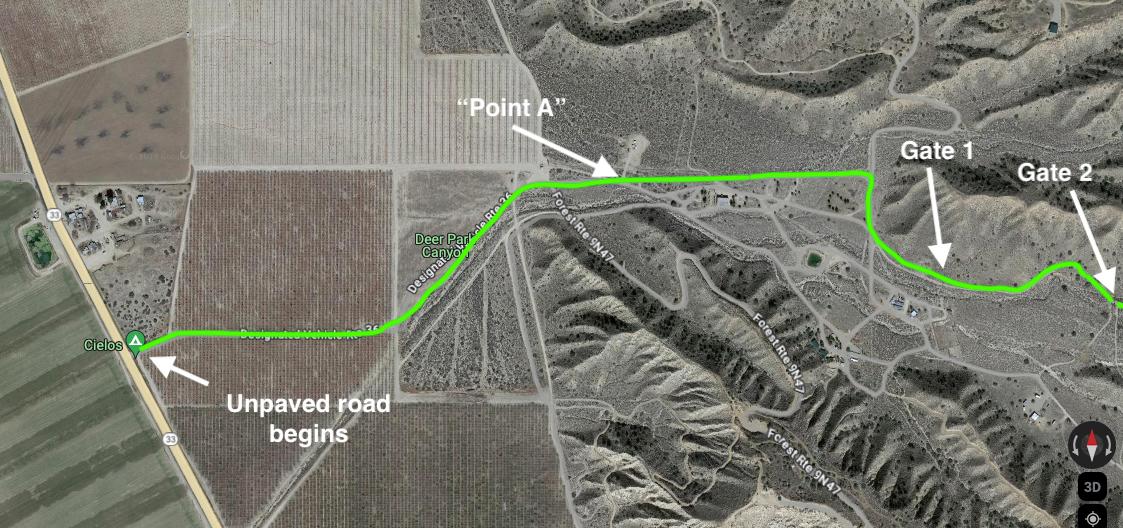 Public access easement route, image 1 of 7
Public access easement route, image 1 of 7John Callender
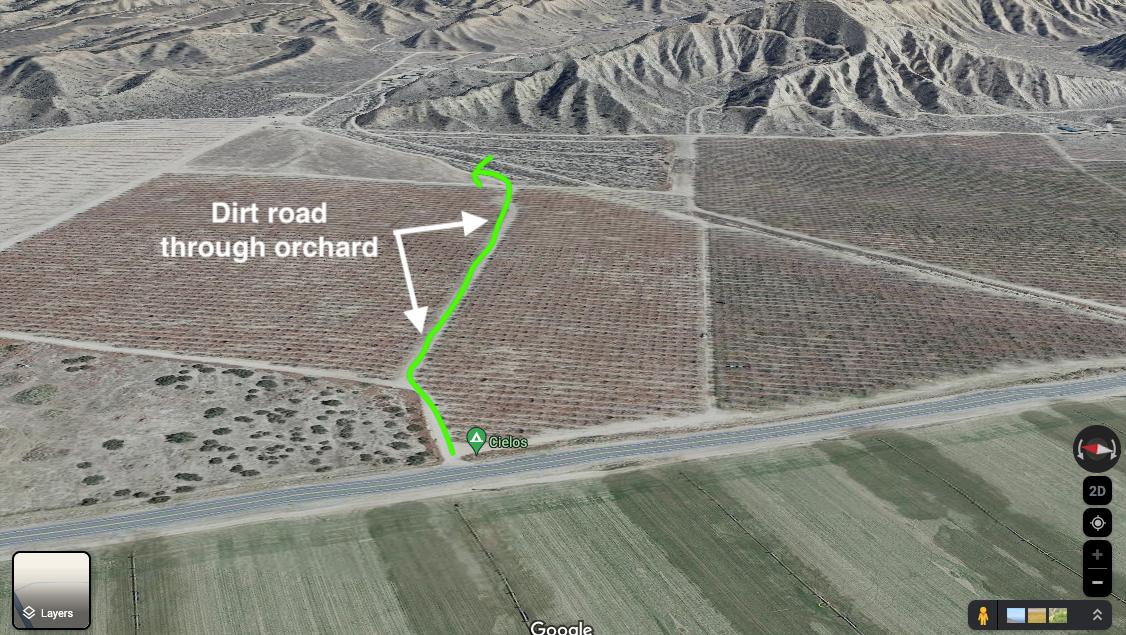 Public access easement route, image 2 of 7
Public access easement route, image 2 of 7John Callender
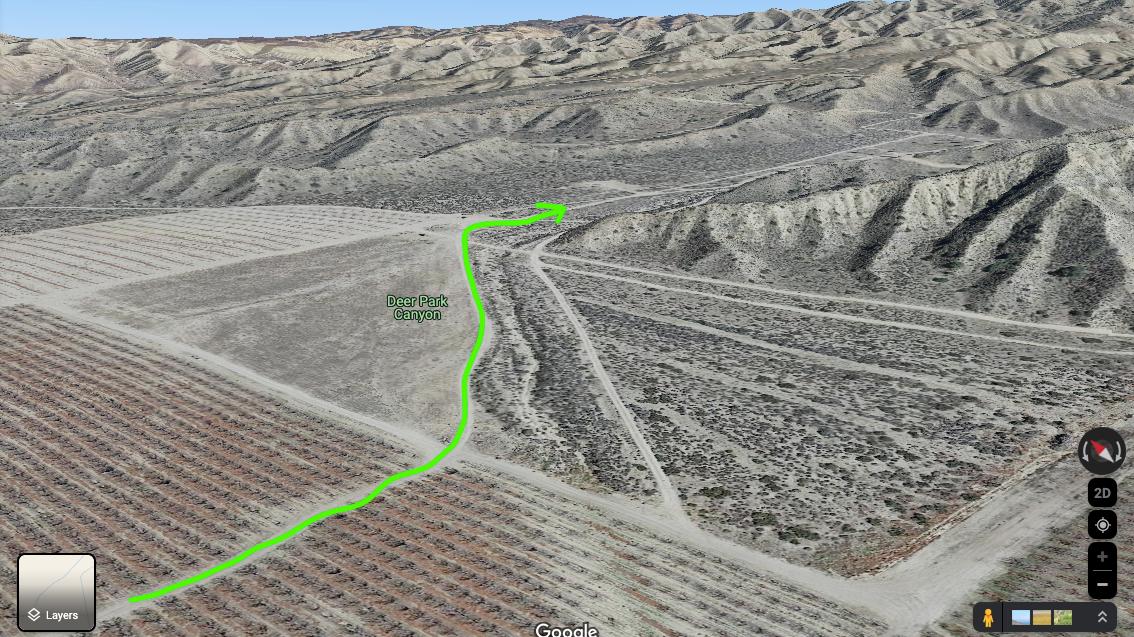 Public access easement route, image 3 of 7
Public access easement route, image 3 of 7John Callender
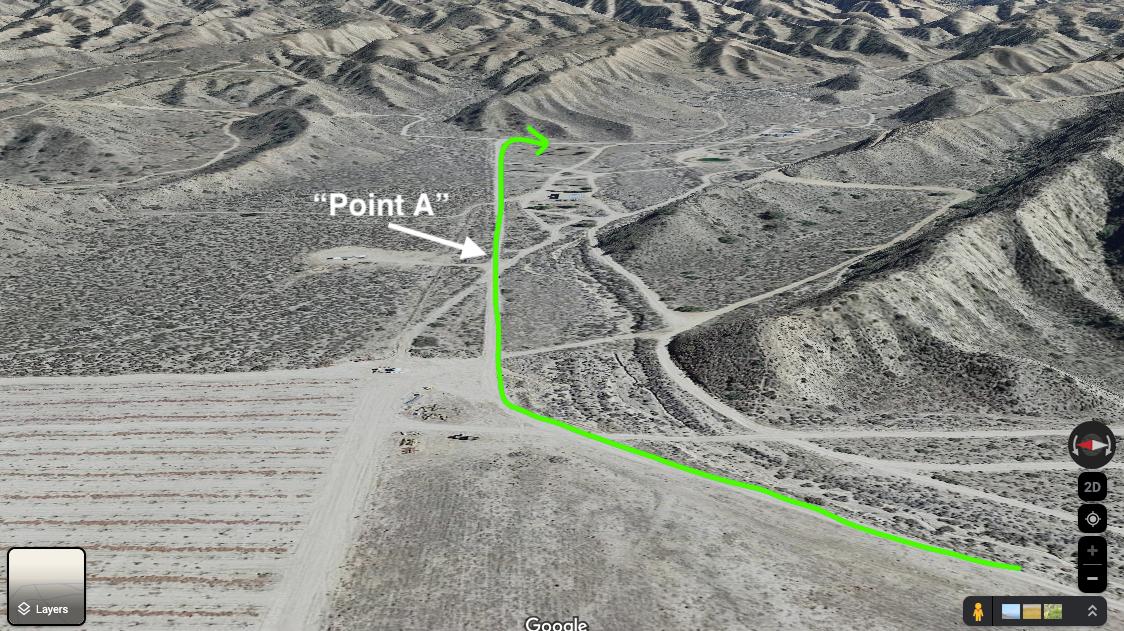 Public access easement route, image 4 of 7
Public access easement route, image 4 of 7John Callender
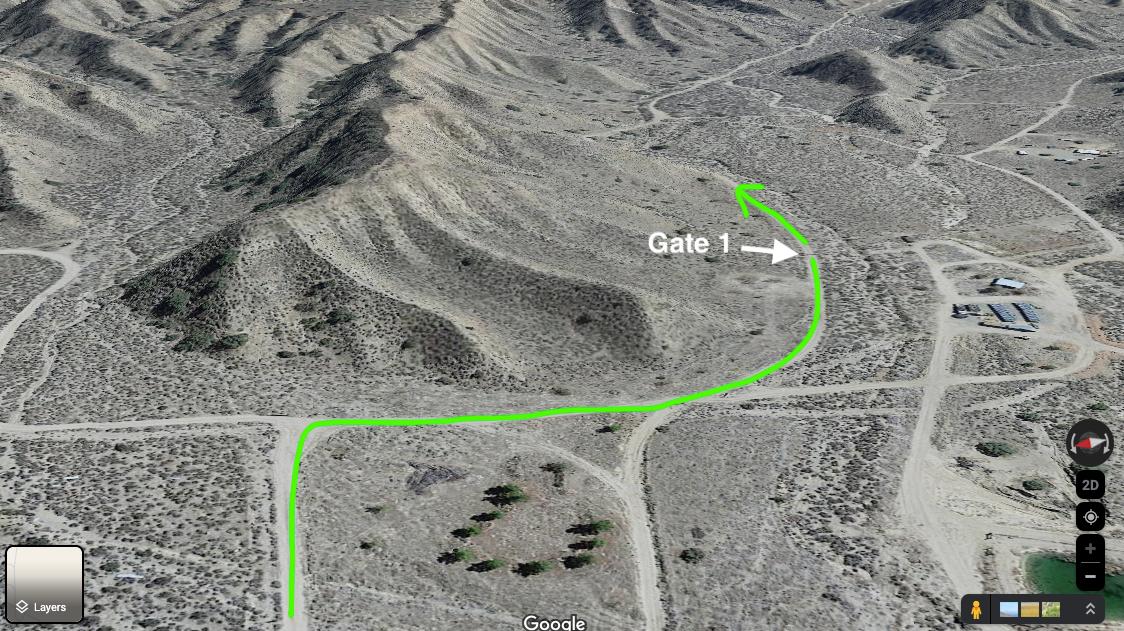 Public access easement route, image 5 of 7
Public access easement route, image 5 of 7John Callender
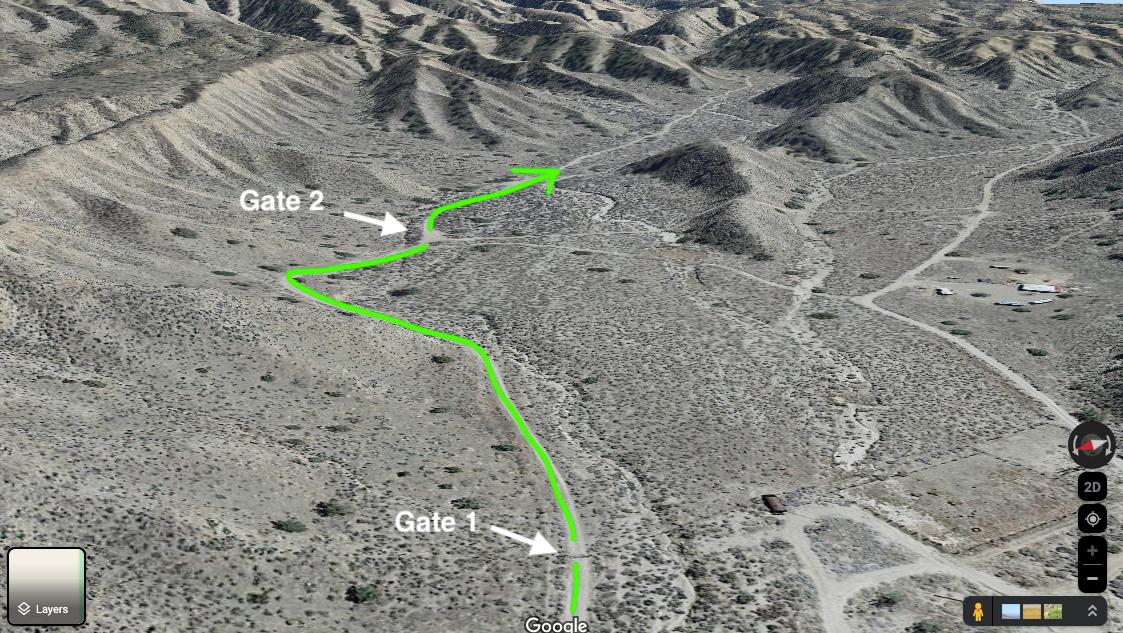 Public access easement route, image 6 of 7
Public access easement route, image 6 of 7John Callender
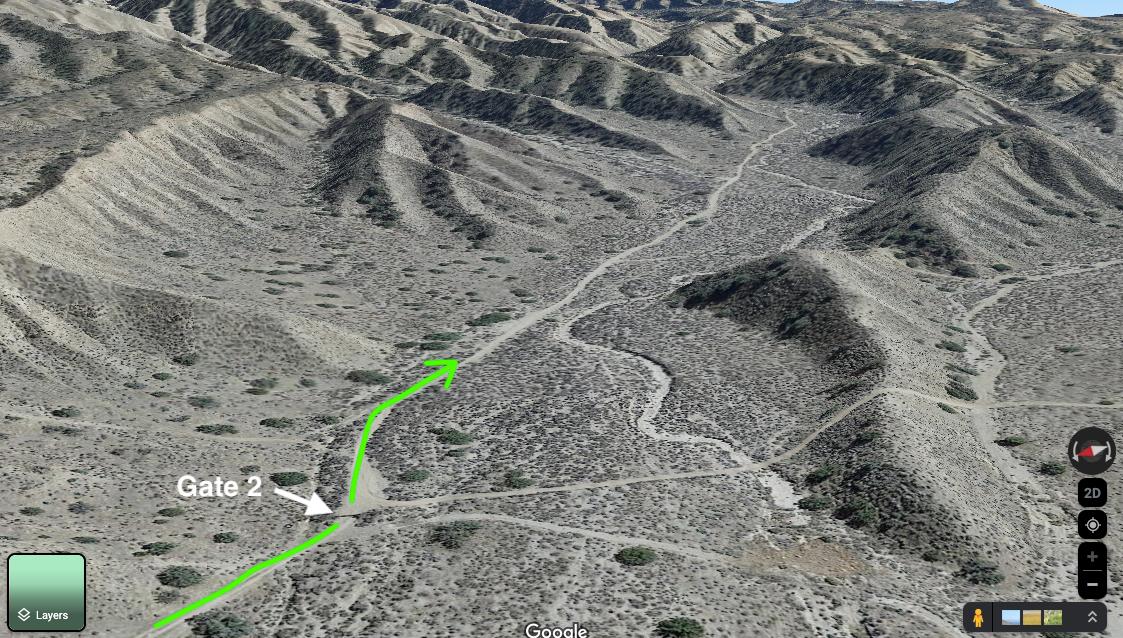 Public access easement route, image 7 of 7
Public access easement route, image 7 of 7John Callender